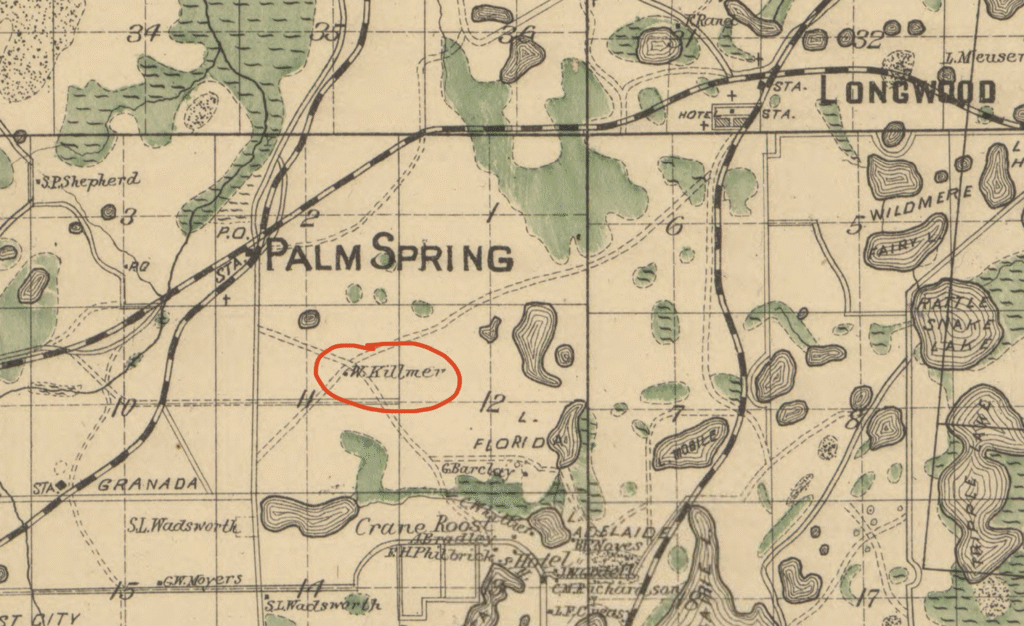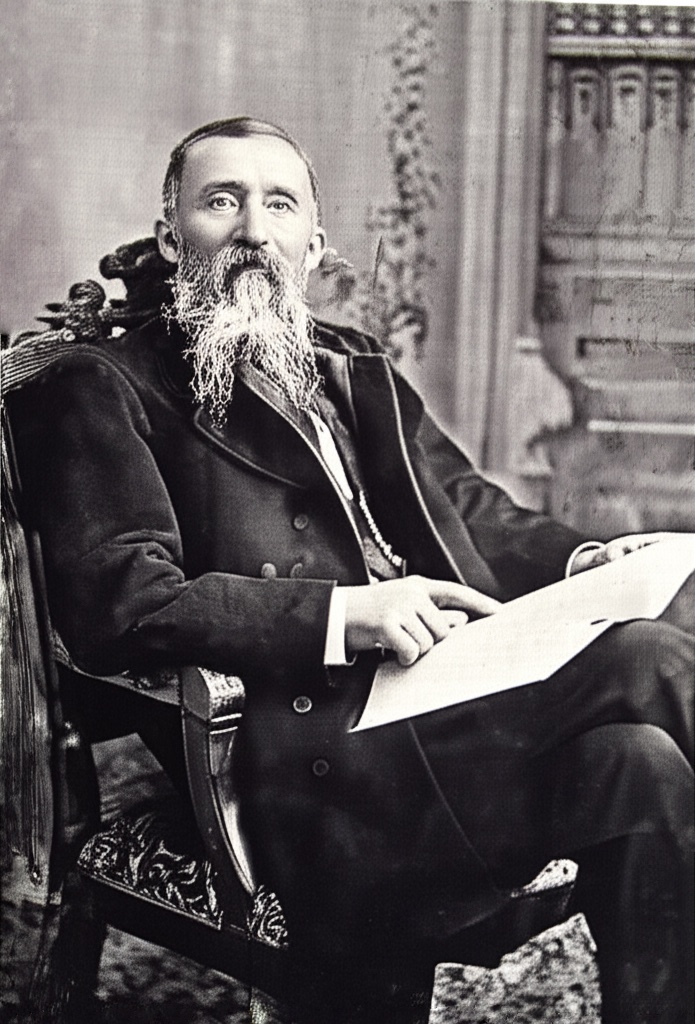Dr. Washington Kilmer: A Journey of Resilience and Service
Imagine facing a grim prognosis, given merely a year to live by your own medical colleagues. This was the stark reality for Dr. Washington Kilmer in 1872, then a physician in Ironton, Ohio, suffering from a severe physical breakdown induced by his tireless professional labors. But Dr. Kilmer was no ordinary man. Instead of succumbing, he embarked on an extraordinary journey from Ohio to Florida, on foot, hoping its famed climate and natural springs would restore his health.
Born on April 5, 1838, in Schoharie County, New York, Washington was the youngest of 11 children to Jonas and Hannah Kilmer. After his mother’s passing shortly after his birth and his father’s remarriage, he grew up amidst the rural fields of the Mohawk Valley. His early education at local schools led him to the Schoharie Academy for collegiate studies, and eventually to Albany Medical College, where he graduated in 1860. During his time at Albany, he lived with his cousins, Chauncy and S. Andral Kilmer, the latter of whom would become famous for creating “Swamp-Root Kidney, Liver & Bladder Remedy”.
His first professional role was as a resident physician at the City Infirmary of Albany, caring for some 1,200 inmates across an insane asylum, hospital, and almshouse. With the outbreak of the Civil War in 1861, Dr. Kilmer volunteered his services, taking charge of the Grace Church Hospital in Alexandria, Virginia, for three years. He later served as a surgeon for the Sixteenth West Virginia Volunteers near Washington City, remaining in the capital to practice for three years after the war.
Around 1864, Dr. Kilmer moved to Ironton, Ohio, establishing an extensive and successful practice for five years. It was there he met Florence Davy, a lineal descendant of the renowned English chemist Sir Humphry Davy. Though sources vary on their marriage date—one states 1871, another 1864—they were joined by two daughters, Alice (born 1866) and May (born 1870).
His arduous foot journey to Florida, undertaken in 1872 or 1873, saw him transform from barely able to walk to regaining full health. Along the way, he served as a correspondent for the Cincinnati Commercial, sharing his observations of rural America.
His travels eventually brought him to a spot in Orange County, Florida, that reminded him of his New York home. He named it Altamont (later Altamonte, with the ‘e’ added in 1895), where he settled with his family, planting one of the area’s first orange groves. Kilmer’s homestead was located halfway between what would become Rolling Hills Golf Course and the Altamonte Mall.



Dr. Kilmer quickly immersed himself in public life, particularly in educational matters. For eight years (1877-1885), he served as chairman of the newly formed Orange County School Board, actively establishing the school system and advocating for strong morals and religion in schools.
His most celebrated act of service came in the fall of 1887, during a devastating yellow fever epidemic in Tampa. When a desperate call for physicians went out, Dr. Kilmer was the only one from Orange County to volunteer. He spent four to five weeks offering unremitting labor to the sick and dying, ultimately contracting the disease himself and barely escaping death. In a heartfelt display of gratitude, the citizens of Orlando presented him with a handsome gold watch on November 24, 1887, inscribed: “Presented to Dr. W. Kilmer by the citizens of Orlando in appreciation of his services in the yellow fever epidemic at Tampa, Fla., Nov. 25, 1887”.
Relocating to Orlando around 1886, Dr. Kilmer resumed his medical practice near the present-day History Center, on the street that now bears his name—Washington Street. For 15 years, he served as a surgeon for the Florida Central and Peninsular Railroad and the Seaboard Railroad, continuing his private practice and remaining interested in orange culture. He also played a part in the establishment of two of Orange County’s courthouses.
Dr. Washington Kilmer passed away in November 1919, 47 years after his near-death experience in Ohio. He is buried with his wife, Florence, who died in December 1906, in Orlando’s Greenwood Cemetery. His daughters, Alice and May, later moved to San Diego, both tragically perishing in a house fire in 1957 and also interred at Greenwood.
Dr. Kilmer’s footprint on Central Florida is undeniable. He gave the city of Altamonte Springs its name. Kilmer was a pioneer doctor and advocate for education. The downtown Orlando street that still bears his name is a testament to his impact. He lived a life marked by remarkable determination and generosity, proving himself to be a truly unsung pioneer whose contributions continue to shape the region even today.
Timeline
- April 5, 1838: Dr. Washington Kilmer was born in Schoharie County, New York.
- 1860: He graduated from Albany Medical College of Union University. Following graduation, he accepted a position as a resident physician at the City Infirmary of Albany.
- 1861: With the onset of the Civil War, he volunteered as a physician and took charge of Grace Church Hospital in Alexandria, Virginia.
- November 29, 1862: He was enrolled and mustered in as a surgeon for the Sixteenth West Virginia Volunteers.
- October 18, 1864: He married Florence Davy in Ironton, Ohio.
- 1865: At the close of the Civil War, he remained in Washington, D.C. to continue his medical practice for three years.
- 1866: His first daughter, Alice Hagar Kilmer, was born.
- 1870: His second daughter, May Kilmer, was born.
- 1872: Following a general physical breakdown that led his medical colleagues to give him up for dead, he decided to undertake a journey on foot from Ohio to Florida for his health.
- 1873: His health was fully restored, and he relocated his family to Orange County, Florida, settling on 160 acres. He named this new locality “Altamont”.
- Around 1875, He became involved in local agriculture, lecturing on agriculture and horticulture, and later joined the Fruit Growers Association.
- 1877-1885: For eight years, he served as chairman of the newly formed Orange County School Board, contributing to the establishment of the school system.
- 1886: Dr. Kilmer re-established his medical practice on Washington Street. His home remained in Altamont for some time, but the family later relocated to an Orlando home on Washington Street.
- Fall of 1887: He volunteered his services during a yellow fever epidemic in Tampa, treating patients for five weeks and becoming afflicted himself, though he narrowly escaped death.
- November 25, 1887: Citizens of Orlando presented him with a gold watch in appreciation of his services during the Tampa epidemic.
- 1892: He was involved in the establishment of Orange County’s brick, Victorian-style courthouse.
- 1892-1897 (approx.): He served as surgeon for the Florida Central and Peninsular Railroad.
- December 1906: His wife, Florence Kilmer, died.
- November 23, 1919: Dr. Washington Kilmer died at the age of 81 in Orlando, Florida. He was buried the next day, November 24, 1919, in Orlando’s Greenwood Cemetery alongside his wife.
Sources
- History of the Kilmer Family in America. By Rev. C. H. Kilmer (1897)
- Orlando History Center Article: Washington Kilmer
- Wikitree – Washington Kilmer
- Early Settlers of Orange County, Florida. By C. E. Howard (1915)
- Find a Grave: Washington Kilmer
- Obituary in Orlando Evening Star (1919)

